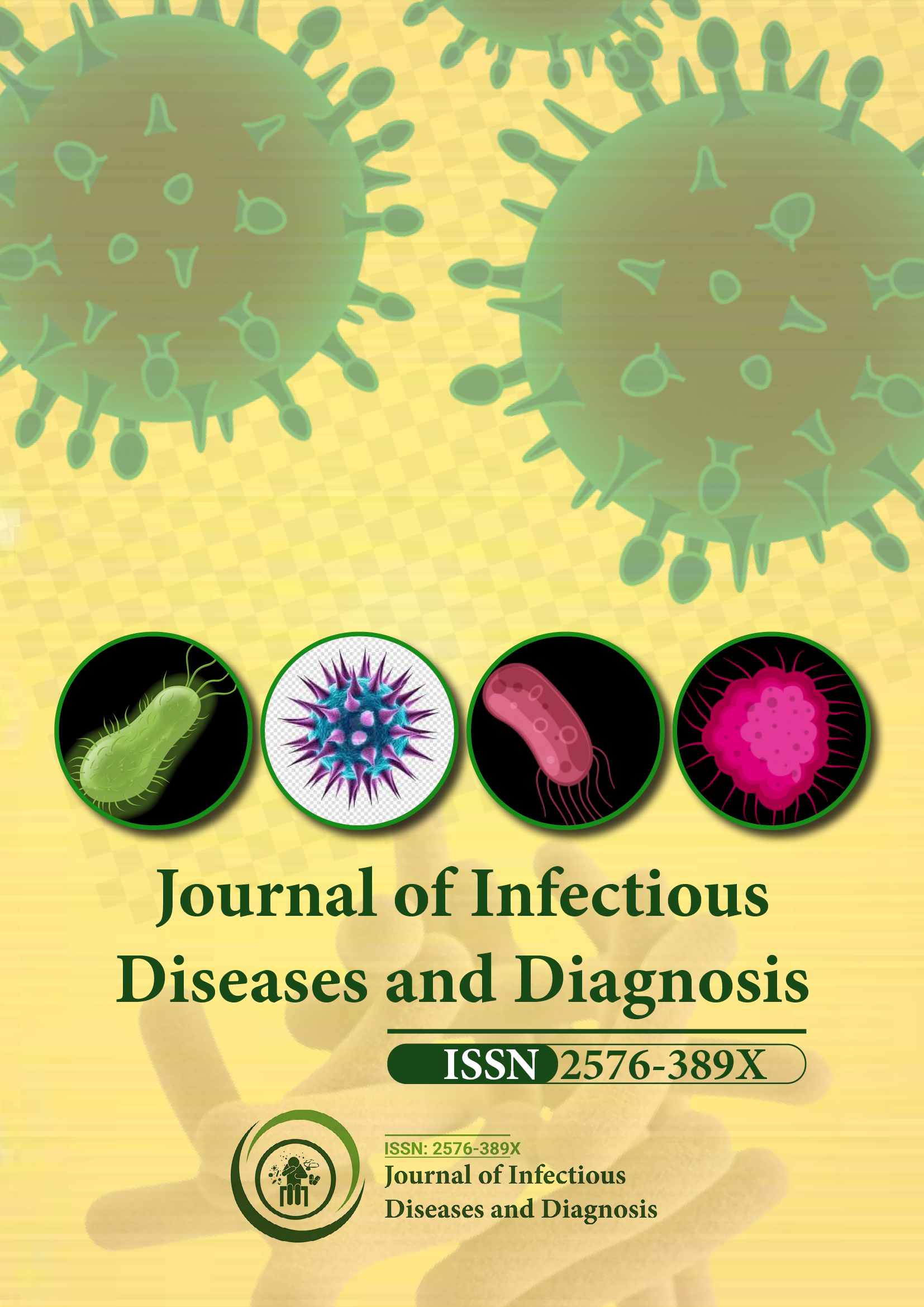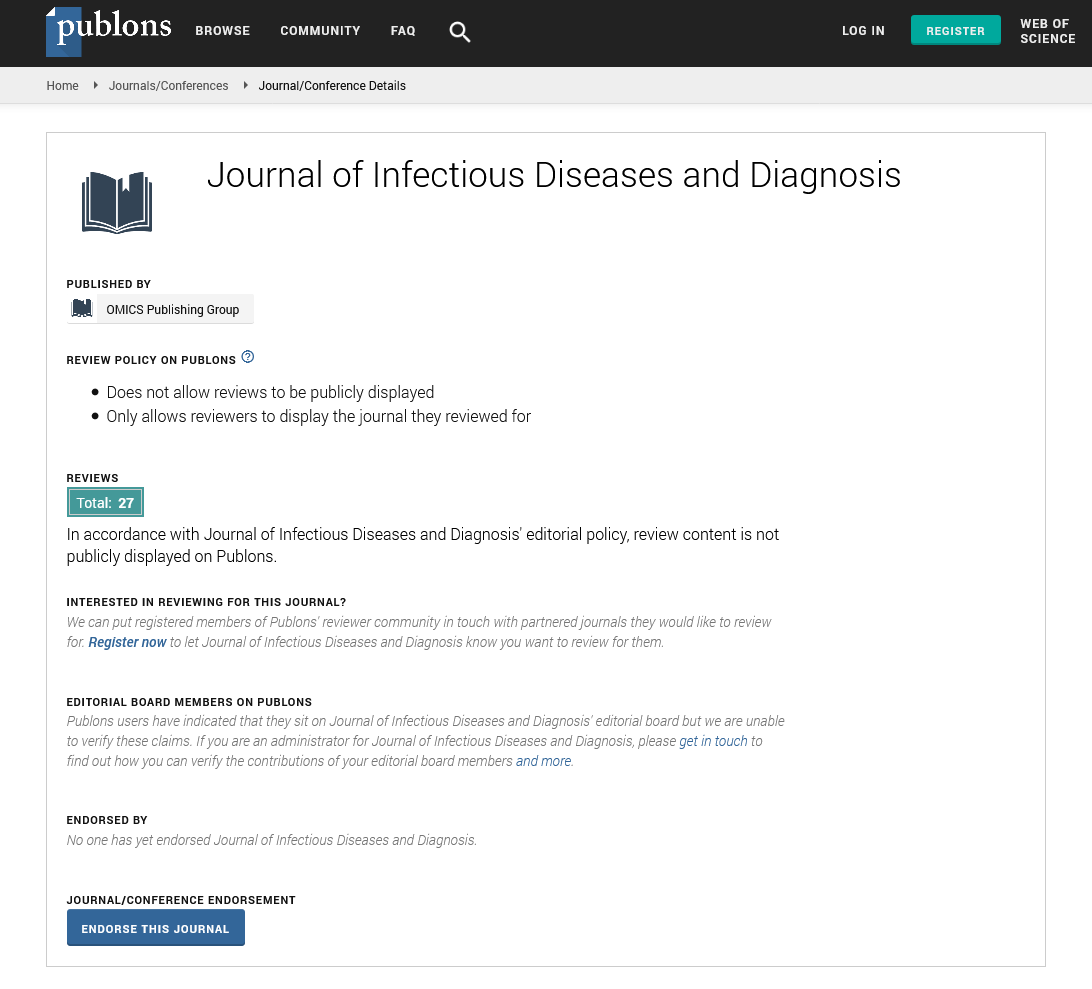Indexed In
- RefSeek
- Hamdard University
- EBSCO A-Z
- Publons
- Euro Pub
- Google Scholar
Useful Links
Share This Page
Journal Flyer

Open Access Journals
- Agri and Aquaculture
- Biochemistry
- Bioinformatics & Systems Biology
- Business & Management
- Chemistry
- Clinical Sciences
- Engineering
- Food & Nutrition
- General Science
- Genetics & Molecular Biology
- Immunology & Microbiology
- Medical Sciences
- Neuroscience & Psychology
- Nursing & Health Care
- Pharmaceutical Sciences
Opinion Article - (2025) Volume 10, Issue 2
Herpes Diagnosis: Evolving Methods, Technological Advances and Practical Challenges in Clinical Settings
Cheng Wein*Received: 25-Feb-2025, Manuscript No. JIDD-25-28670; Editor assigned: 27-Feb-2025, Pre QC No. JIDD-25-28670 (PQ); Reviewed: 14-Mar-2025, QC No. JIDD-25-28670; Revised: 21-Mar-2025, Manuscript No. JIDD-25-28670 (R); Published: 28-Mar-2025, DOI: 10.35248/2576-389X.25.10.324
Description
Herpes Simplex Virus (HSV) infections remain among the most common viral infections worldwide, primarily caused by HSV-1 and HSV-2. Accurate diagnosis is essential for effective management, reducing transmission and guiding treatment options. Over the years, diagnostic methods for herpes have evolved from basic clinical assessments to highly sensitive molecular techniques.
Herpes simplex virus infections affect millions globally, with HSV-1 commonly associated with orolabial lesions and HSV-2 primarily responsible for genital herpes. Despite the high prevalence, many cases remain undiagnosed due to asymptomatic infections or misdiagnosis. As herpes can lead to significant discomfort and may increase susceptibility to other infections, including HIV, timely and accurate diagnosis is important.
Herpes diagnosis encompasses both direct and indirect methods. Direct methods detect the virus or its components, while indirect methods rely on identifying the body’s immune response. Selecting the appropriate diagnostic approach depends on several factors, including the stage of infection, availability of laboratory resources and patient symptoms.
Clinical diagnosis
Initial diagnosis often begins with clinical observation. Healthcare providers assess characteristic symptoms such as painful vesicular lesions, ulcers, or burning sensations. While this method is quick and inexpensive, it has limitations. Herpes lesions can resemble those of other conditions like syphilis or chancroid, leading to potential misdiagnosis. Furthermore, asymptomatic individuals or those with atypical presentations may be overlooked.
Laboratory diagnosis
To confirm a clinical suspicion or detect asymptomatic cases, laboratory tests are essential. These include:
Viral culture: Traditionally regarded as a reference method, viral culture involves collecting a sample from a lesion and incubating it to detect viral replication. Although highly specific, this method is time-consuming and has reduced sensitivity, particularly in later stages of lesion development. Cold chain requirements and skilled personnel further limit its practicality in low-resource environments.
Polymerase Chain Reaction (PCR): PCR has emerged as one of the most sensitive and specific methods for herpes detection. It amplifies HSV DNA from lesion swabs, cerebrospinal fluid, or blood, allowing identification even in cases with low viral loads. PCR can also differentiate between HSV-1 and HSV-2, which is important for guiding prognosis and counseling. Despite its advantages, PCR testing is often more expensive and may not be widely available in all healthcare settings.
Direct Fluorescent Antibody (DFA) test: DFA uses fluorescently labeled antibodies to detect HSV antigens in samples. While faster than culture and more accessible in some laboratories, it is less sensitive than PCR. This method requires well-trained personnel to interpret results accurately under a fluorescence microscope.
Tzanck smear: An older and less commonly used method, the Tzanck smear involves microscopic examination of skin scrapings for multinucleated giant cells. Although quick and inexpensive, it cannot distinguish between HSV and varicellazoster virus and lacks precision, reducing its usefulness in modern diagnostics.
Serological testing
Serological tests detect antibodies against HSV and are particularly helpful when active lesions are absent. These tests help identify previous exposure and differentiate between HSV-1and HSV-2. However, interpreting results requires careful consideration. Antibodies may not be present in the early phase of infection, leading to false negatives. Furthermore, since HSV-1 is highly prevalent, positive results may reflect past oral infections rather than genital herpes, which can complicate diagnosis in Sexually Transmitted Infection (STI) clinics. Type-specific serologic assays based on glycoprotein G have improved the accuracy of antibody detection, aiding in patient counseling and long-term risk assessment. These tests are useful in prenatal care to assess the risk of neonatal herpes, particularly in mothers with no prior exposure.
Point-of-care testing
Rapid diagnostic tests that can be used at the bedside or in clinics are gaining popularity. These tests typically provide results within minutes and can be used without sophisticated laboratory equipment. While convenient, many of these tests show variable performance and their accuracy may be lower than lab-based methods. Still, they offer an accessible option in remote or underserved areas.
Emerging techniques
Advancements in diagnostic technology continue to improve the landscape of herpes testing. Microfluidic devices, nextgeneration sequencing and biosensors are being explored for their potential to enhance sensitivity, reduce turnaround times and simplify workflows. Integration with mobile health platforms may further support self-testing and expand outreach.
Challenges and considerations
Despite the availability of various testing options, barriers remain. Cost, infrastructure limitations and stigma associated with sexually transmitted infections may deter individuals from seeking testing. Educating both healthcare providers and patients about the availability and importance of herpes testing can help address under diagnosis. Moreover, false negatives in early infection or latent periods and false positives due to crossreactivity with other herpesviruses necessitate cautious interpretation of results. A comprehensive diagnostic strategy may require combining clinical judgment with multiple testing modalities.
Conclusion
Herpes diagnosis has progressed significantly, with molecular methods offering high accuracy and speed. Yet, no single test is universally applicable across all scenarios. Clinicians must consider the patient's symptoms, timing of presentation and available resources when choosing diagnostic tools. Continued innovation and improved access to testing will support earlier diagnosis and better management of herpes infections, contributing to overall sexual health awareness and care.
Citation: Wein C (2025). Herpes Diagnosis: Evolving Methods, Technological Advances and Practical Challenges in Clinical Settings. J Infect Dis Diagn. 10:324.
Copyright: © 2025 Wein C. This is an open-access article distributed under the terms of the Creative Commons Attribution License, which permits unrestricted use, distribution and reproduction in any medium, provided the original author and source are credited.

